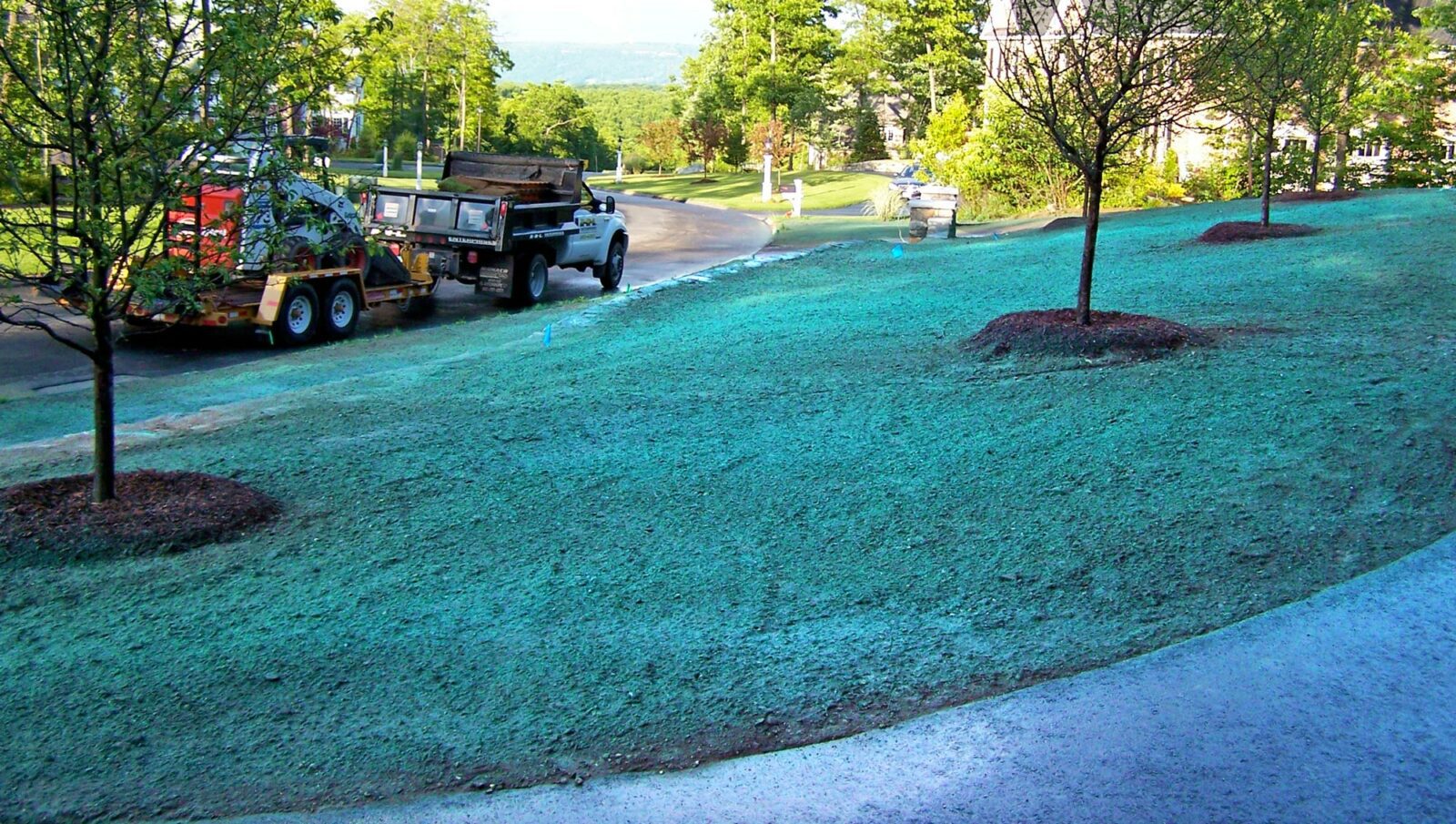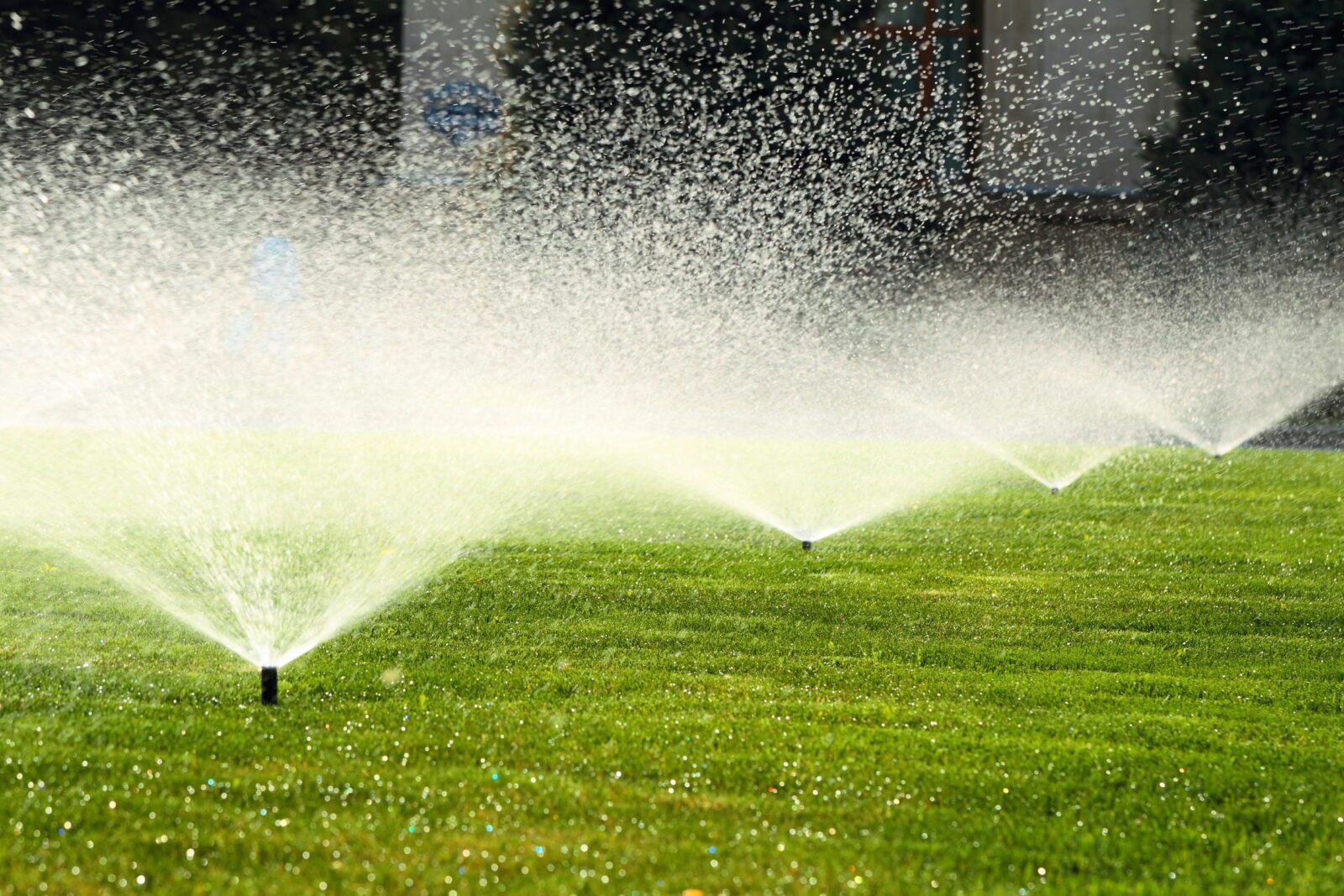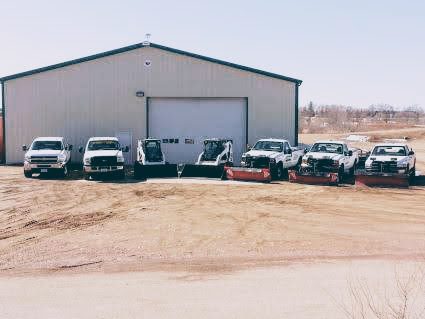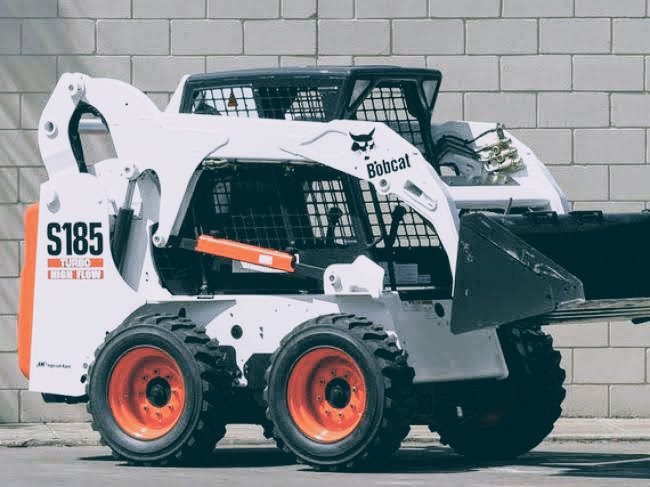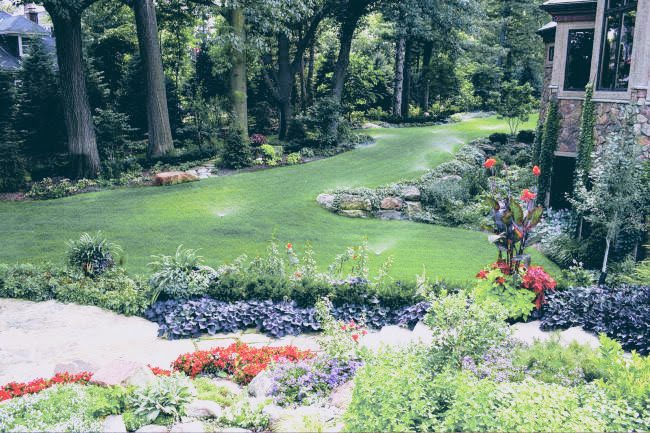Other Services
Landscape Lighting
Why Install Landscape Lighting?
benefits of Landscape lighting
USABILITY: Landscape lighting enjoyably extends the time spent outdoors. Now patios, pools, and children’s play areas become entertainment venues or just relaxing places to unwind.
SAFE PASSAGE: Hazards such as steps, low-hanging or thorny vegetation, abrupt changes in elevation or debris in a walkway can all be avoided with properly placed landscape lighting. Guests can be safely guided away from hazards.
SECURITY: It’s a proven fact that a well-lit landscape will deter potential intruders by eliminating dark areas and shadows that would conceal movement around the property.
VALUE: Landscape lighting not only brings a property to life, it also provides excellent return on investment by creating a stunning first impression when viewed by visitors.
Design Strategies
Path & Spread Lights
Accent & Deck Lighting
This style of lighting provides the interest in your nightscape. Accent lights should be used selectively to create visual focus; too many accent lights result in competition between lighting systems.
Grazing
Lighting is placed to shine across a textured surface such as brick or stucco walls, or a natural surface such as tree bark.
Silhouetting
Reflecting light of a vertical surface behind that object can create silhouetting of an object. The light source should be concealed, usually directly behind and below the object to be silhouetted.
Up-lighting
This style of lighting provides dramatic effect. The light source is mounted or recessed in the ground and angled up to display a tree, artwork or structure
hydroseeding
Advantages of Hydroseeding
- A n affordable and versatile application
- Protects seeds from heat and birds
- Maintains soil temperature
- Prevents seeds from washing away
- Organic components enrich the soil
- Retain moisture, which means less watering
- Allows better root formation
- Even application of seeds is more possible than with broadcast seeding
- No need to remove straw as you do with broadcast seeding
- Less than half the cost of using sod
- Great for slopes and hard to reach areas
- Ideal way to minimize erosion
- Great for seeding wild flowers on lake banks and hard to reach areas
When To Use Hydroseed
- Establish a new lawn
- Control erosion
- Vegetating land after fire or flood
Hydroseed Vs. Dry Seeding
- Hydroseeded lawns come up faster. We often hear of grass up in as few as 3-5 days.
- Hydroseed has attractive green appearance that looks far better than lawns dry seeded and covered with straw mulch.
- Hydroseed mulch has no weed seed. Straw is loaded with weed seed.
- Hydroseeding allows for custom tailoring of the proper seed for your job.
- It is not uncommon to use two or three different varieties of seeds. Custom spraying the right seed for different areas of the lawn or job is sometimes necessary. When needed, we will use one seed for shady areas, one for high trafic areas, and one to make the front lawn a showpiece.
- Hyrdoseeding mulch adds to the humus content of a lawn as it decomposes. The bacterial action of straw will leach nitrogen from the soil as it decomposes.
Hydroseed Vs. Sod
- Hydroseeding will produce turf as nice looking as sod within a very short time at signi ficant savings. Sod is a good solution for the need for a new lawn, but it is very expensive. Sod generally costs 3 to 5 times more than hydroseeding.
- Sod can have a problem with the soil it was grown on not having sufficient compatibility with the soil it is planted on, which is called “not taking.” With hydroseeding, the new seedlings are grown on your own soil, so there is no risk of it not taking.
- With sod the roots are chopped off, resulting in a less healthy plant.
- Hydroseeding requires about 1/3 the amount of watering as sod.
- Sod will shrink over the first month and if it is not installed properly gaps will open up between the sod rows.
Sprinkler Backflow Testing
Definition
A device that allows water to go through it in one direction, but prevents it from going backwards in the opposite direction.
A backflow preventer is like a one-way gate for water. Most backflow preventers are used to keep unsafe water from reversing flow and entering the clean water supply. Backflow preventers can be as simple as a single check valve that closes when water flow reverses. Using a simple check valve as a backflow preventer might be considered the equivalent of a turnstile at a store entrance, it is not very reliable, even a small amount of effort will overcome it. A more elaborate backflow preventer can be a complicated device that consists of multiple check valves, water release valves, air vents, and/or systems to allow it to be tested to assure it is working properly. This kind of backflow preventer might be the equivalent of an airport security checkpoint with one-way gates and an armed guard.
Basics
You should have a backflow preventer on your irrigation system if your water comes from a “potable” (drinkable) source (see next paragraph.) If your irrigation water source is considered potable, then in most places it is illegal to not have the proper local authority-approved type of backflow preventer on your irrigation system. If your water source is non-potable, you generally are not required by law to use a backflow preventer (but not always, some jurisdiction even require them for non-potable water like recycled, reclaimed, and gray water sources).
There are many types of backflow preventers. Almost everywhere the local authorities will dictate that certain types of backflow preventers may NOT be used with irrigation systems within their jurisdiction. In some cases, the authorities will dictate the exact type of backflow preventer you MUST use. You may hear or see the term “Cross-Connection Control“, this essentially is referring to backflow prevention. A cross connection is a connection between a drinking water supply and a source of pollution or contamination.
What’s potable water? Definition: potable water means the water is suitable for drinking. Depending on local law, that may include drinking water for animals. If you would be willing to drink it without treatment, then it is probably going to be considered potable. Non-potable water is water that is not suitable for drinking. (Once water enters into your irrigation system it is considered to be non-potable, more on that later.) Examples of water sources that are often considered non-potable are lake and pond water, water from streams, and well water from a contaminated aquifer that is not suitable for drinking. Most other wells do require a backflow preventer, even if the well doesn’t provide drinking water. This is to protect the aquifer the well takes the water from, because even if you don’t get drinking water from the well, your neighbors may get drinking water from the same underground aquifer. If you plan to apply fertilizers or pesticides using your irrigation system, then in most cases you must have a backflow preventer- regardless of the water source. Nobody wants those chemicals going into lakes, streams or the water table!
Why do you need a backflow preventer?
Your landscape has all kinds of nasty things in it that will make you sick or worse if you drink them. Thus irrigation water is officially considered a contaminant (creates a health hazard) rather than just a pollutant (is objectionable in color or odor). What’s in irrigation water? How about toxic chemicals (fertilizers, pesticides, etc.) and animal waste? (Not that I want to gross you out, but every day millions of dogs lift their legs in a fond salute to their favorite sprinkler head!) These things can and WILL come back up your irrigation pipes and into your drinking water if you don’t stop them. If you have a well, they can go down your well and into everyone else’s drinking water. If you are on a community water system they could go back up into the pipes and poison your neighbors. The valves that turn on and off your irrigation system are not sufficient to stop backflow. The purpose of the backflow preventer is to protect you when the valve breaks or leaks, which all valves will do eventually. Saving a little money by skipping the backflow preventer will not seem so smart after you spend a small fortune on hospital bills (or funeral expenses) for a poisoned family member or pet!
Now wait a minute, some people say, doesn’t the water pressure in the water system keep the irrigation water from going backwards? Yes, most of the time it does. But there are times when the water pressure drops in the supply system, and this is when the backflow occurs. No, it is not a frequent occurrence. For example when the water company has to shut off the water to repair a water pipe or hook up a new pipe. This makes construction projects easily the most common cause of backflow problems. Fire fighting is another common cause of backflow. Fire trucks use huge pumps to suck the water out of the fire hydrants. This often causes the water pressure in the surrounding areas to drop, and backflow will occur in the surrounding neighborhoods.
You can do a quick experiment yourself and create backflow in your home pipes. Simply turn off the water valve leading to your house. Next have someone turn on a faucet. Now turn on a different faucet that is higher than the first. You will hear air being sucked into the higher faucet. You just created backflow in your house piping. Pretty easy, wasn’t it?
Another common argument against the need for backflow preventers is that if all the valves are closed the water can’t go backwards through them, so the valves should prevent backflow. The obvious problem with this is that if the backflow occurs at a time when the valve is open, like when the sprinklers are on, the valve will not stop backflow! But even when the valve is closed it may not prevent backflow. A standard manually operated valve should stop backflow when it is closed– if the valve is fully closed, has good seals, and does not leak. However most of the automatic valves, such as the electric solenoid valves used for irrigation systems, will not stop backflow even when “off” and fully closed. This is because these solenoid valves are directional in design. If you look on the valve you will see that it has an arrow on it showing the flow direction. If the flow is reversed, the valve will often open slightly (that’s why the valve has the arrow on it- to warn you not to install it backwards!). Thus when backflow occurs and the flow direction reverses, an automatic valve will not stop the backward flow.
All sprinkler systems that are hooked to city water require a backflow preventer. This device prevents harmful things such as fertilizers to get into our drinking water. All local city utilities require the installation of backflow preventers for sprinkler systems and to be sure they are working correctly.
This device prevents harmful things such as fertilizers to get into our drinking water.
What is backflow?
Backflow is when water flows backward into the public water supply. This is usually caused when pressure in a home plumbing system is higher than the pressure distribution system. The difference in pressure can be due to a pressure drop in the distribution system. Pressure reduces when a water main bursts, pipes freeze or there is unexpectedly high demand on the water system. For example, if water is drawn from a hydrant near your home, the pressure in the distribution system could be less than in your plumbing system. The higher pressure from your personal plumbing may allow contaminated water from the ground, from storage or from other sources to be drawn into the main system.
Can I really contaminate the public water supply?
Yes. Every time you wash your car or power wash your deck, you become vulnerable to back siphonage. For example, if you leave a hose in a soapy bucket of water, or connected to pesticide sprayer, the polluted water can be pulled back through the system and contaminate the public water supply. Keep in mind that back siphonage can happen at home, business or restaurant. Outbreaks of gastrointestinal distress, hepatitis A and Legionnaires disease have been reported due to instances of unprotected backflow.
Typical backflow preventer applications
•Irrigation sprinkler systems •Air conditioning systems •Laboratory equipment •Photo developing equipment •Boilers -Swimming pools •Solar heat systems •Fire sprinkler system •Soda vending machines
Who can test my backflow preventer?
Testing of your backflow must be performed by a technician licensed and certified in the testing and repair of backflow assemblies. Most city utilities and water purveyors recommend annual inspection and testing of your backflow devices. (Depending on the size of your community you may be required to test your devices.) Certified documentation of the testing of your backflow preventer will be kept on file at our office. Northwest Iowa Sprinkler is one of only a few irrigation and backflow testing companies in Northwest Iowa. Call today to make an appointment to have your backflow preventer installed or tested.
Snow Removal
Removal
Northwest Iowa Sprinkler is more than just a sprinkler system installation and repair company. During the winter months, we offer residential and commercial snow removal in Milford and Arnolds Park area. We’ll make sure your driveways, entryways, sidewalks, and parking lots are clear of snow and de-iced (if desired), creating a safe environment for employees, visitors and residents.
We also offer sanding or salting of parking lots in Milford, Arnolds Park, Okoboji and Spirit Lake. Our sand has approximately 30% salt in the mix. This keeps the sand from freezing and helps melt the ice and snow upon contact.
Salting
We also salt parking lots with Magic Ice B Gone
Magic Ice B Gone is a highly efficient solid granular de-icer. It is effective down to -35 degrees Fahrenheit. With Magic Ice B Gone you can expect to “burn off” up to two inches of snow with no plowing. Magic Ice B Gone also exhibits a residual effect, making it last longer than ordinary de-icers sometimes up to 6 or 7 days without a freeze up. Magic Ice B Gone effectiveness allows you to use 30 to 50 percent less product when compared to Rock Salt. Magic Ice B Gone is biodegradable, environmentally friendly, pet-friendly, and less corrosive than traditional treatments.
Magic Ice B Gone is safer to use on concrete and other hardscape products, is less corrosive, and will not harm curbside grassed areas or plants when used as directed.
Magic Ice B Gone starts out as ordinary rock salt and is then treated with a liquid, agricultural by-product of the distilling process blended with magnesium chloride. This patented liquid is trademarked as Magic Minus Zero. This combination process results in what we call “Magic Ice B Gone.”
Equipment Rental
Landscape & Construction Equipment Rental
Call ahead to rent and return rental equipment.
We are a rental by appointment company.
(712) 338-2756 or (712) 320-2786
We have new eqiupment arriving regularly. If you don’t see it, ask.
Skidloader & Compact Tractor Equipment
- Bobcat S590 Skidloaders with High Flow with 2 Speed
- Bobcat MT100 Mini Skidloader (40″ bucket, forks, 37″ tiller)
- Bobcat E26 Mini Excavator with 12″ 18″ & 24″ bucket sizes and hydraulic thumb
- Bobcat E10 Mini Excavator with 8″ & 12″ Buckets
- Bobcat Auger with 9″, 12″, 18″, 24″, 36″ Bits with 2′ & 4′ Extensions 27″ wide
- Bobcat Concrete Breaker
- Bobcat 6′ Tiller
- Bobcat 37″ Tiller for small skidloader or Bobcat Mt
- Bobcat 6′ Angle Broom
- Bobcat Pickup Broom 74″ (Brooms debris right into the bucket in one pass on pavement)
- Landscape Rake (Cleans debris and rocks out of the soil and puts into a bucket in one pass)
- Bobcat 6′ Rock & Brush Grapple Bucket
- Bobcat 50″ x 8″ Trencher Attachment
- Bobcat Tree & Post Puller
- Bobcat 4′ & 6′ Soil Conditioner
- Bobcat 12″ Quick Backhoe
- Bobcat 6′ Brush & Tall Grass Rotary Cutter
- Bobcat Smooth & Tooth Buckets
- Bobcat Pallet Forks
- Bobcat CT235 Compact Utility Tractor
- 6′ Brillion Seeder
- 5.5′ Befco Overseeder
- 6′ 3 Point Mower
- 6′ 3 Point Box Blade
- 7′ 3 Point Soil Pulverizor
- 6′ 3 Point Tiller
- Skidloader powered stump grinder
- Canycom SC75 Track Pivot Buggy (2,200 payload)
Trenching, Lawn & Misc. Equipment
- Case 360 Trencher & Vibritory Plow
- DitchWitch 410 Trencher & Vibritory Plow
- Easy Trench 13″ Deep x 2.5″ wide Ground Saw (Trencher)
- Classen Core Aerator
- Classen HTS-20H Turf Rake/Seeder 20″ Self Propelled
- Maxim Rear Tine Tiller (18″ wide)
- Bluebird Bed Bug Bed Edger
- Bluebird Power Rake
- Bluebird Power Over Seeder (Slit Seeder)
- Ryan Jr Sod Cutter
- Honda Gas Powered Pressure Washer 3000 psi
- Snow Blowers
- 35 Ton SpeeCo Log Splitter 26″ Max Log Length
- 14′ Dump Trailer
- 2 – 18′ Tilt Bed Trailers
- 2 – Sullair 185 Air Compressors
- Ground Hog Towable Earth Auger
- Dosko Walk Behind Stump Grinder
- Mini Trencher (Chainsaw Type trencher)(1.5″ wide x up to 27″ deep) Rental & Sales
Small & Misc. Tools
- Large & Small Hammer Drills
- Electric Jackhammer
- 4′ lawn roller
- Bull Float
- Concrete Quickie Saw (Stihl)
- Vibratory Plate Packer
- Appliance Cart
- 4500 Watt Generator
- Wet-Dry Shop Vac
- Engine Hoist
- Dunk Tank
- Cash Cube (Money Blowing Machine)
- 2″ 150 gpm Trash Pumps
- Echo Weed Eater
- Back Pack Leaf Blower
- Seed Spreader
- Echo Chain Saw
- 1 Man Gas Auger with 8″ Auger
- Call if you don’t see it we may have it but just not listed.
Miscellaneous Services
Invisible Pet Fence, Trenching for Power and Utility Lines, Lawn Seed For Sale, Fertilizer Injection, Firewood for sale.
Invisible Pet Fence

Northwest Iowa Sprinkler also installs and does repairs on invisible pet fences. We install Petsafe brand invisible fences or if you wish we will install your pet fence kit. We can also locate the wires for an existing pet fence for you if you need that service. If you have a pet and have been thinking about an invisible pet fence give Northwest Iowa Sprinkler a call and let your pet run free in the yard today.
Lawn Seed Sales
Northwest Iowa Sprinkler carries a variety of lawn seed blends from shade, sun and shade, full sun, high traffic-low maintenance seed and wildflowers to name a few. If we don’t have the seed you need in stock we can get it quickly as we have several great suppliers of seed to meet your needs. We offer premium lawn seed at great prices. Give Northwest Iowa Sprinkler a call today for all of your seed needs.
SUNLAWN MIX
Sunlawn is an equal mix of fast germinating lower maintenance Kentucky Bluegrass and a blend of Fine Leaf Perennial Ryegrass. The Rye establishes fast and provides a quick cover to give the Bluegrass time to develop. Use this mix for new lawns and for inner seeding in areas that will receive more than two hours of sunlight a day. With adequate moisture and temperature you should start to see growth in 5-7 days.
- PLANT 3-5#s PER THOUSAND SQUARE FOOT
IN AREAS OF NEW SEEDING - PLANT 1-2#s PER THOUSAND SQUARE FOOT
OF INNER SEEDING
50% Kentucky Bluegrass
50% Fine Leaf Ryegrass Blend
PERMALAWN MIX
Permalawn combines hardy low maintenance Kentucky Bluegrass, Fine Leaved Perennial Ryegrass and Creeping Red Fescue to give you a seeding mixture that will adapt to both sunny and shady lawns. The Rye will come fast to provide an environment for the Bluegrass and Fescue to grow. The Blue will eventually take over in the sunny areas and the Fescue will dominate the shady places. All three grasses are very similar in blade width, color and texture to ensure that you will grow a fine looking uniform lawn.
- PLANT 3-5#s PER THOUSAND SQUARE FOOT
IN AREAS OF NEW SEEDING - PLANT 1-2#s PER THOUSAND SQUARE FOOT
OF INNER SEEDING
1/3 Kentucky Bluegrass
1/3 Creeping Red Fescue
1/3 Fine Leaf Ryegrass Blend
ELITE LAWN MIX
This mixture contains a large percentage of a blend of our Best Kentucky Bluegrasses and the Fine Leaf Ryegrass Blend. The grass varieties in the blends are selected for not only their superior color and fine texture, but also for their insect and disease resistance. This mixture will give you a plusher, darker green lawn once established. The lawn you will get from this seed may require a little more maintenance in regard to fertilizer and mowing, but the result will be a dark green lawn that you will be proud of.
- PLANT 3-5#s PER THOUSAND SQUARE FOOT
IN AREAS OF NEW SEEDING - PLANT 1-2#s PER THOUSAND SQUARE FOOT
OF INNER SEEDING
60% Premium Kentucky Bluegrass Blend
40% Fine Leaf Ryegrass Blend
TUFF TURF
Tuff Turf is the most durable low maintenance grass mixture we package. The Turf Type Fescue used in this mix is one of the fastest starting, greenest, most drought tolerant grasses available for lawn use. This mix will start fast and adapt to poor soils, dry conditions, heat, sun and is even well adapted to shade. The Fescue will be a little broader bladed than Kentucky Bluegrass, but its toughness and ability to withstand high traffic, has made it the number one choice for football fields and baseball diamonds in recent years. Due to the lesser number of seeds per pound, Tuff Turf should be planted at a higher rate than bluegrass mixes.
- PLANT 5-8#s PER THOUSAND SQUARE FOOT
IN AREAS OF NEW SEEDING - PLANT 2-4#s PER THOUSAND SQUARE FOOT
OF INNER SEEDING
75% Turf Type Fescue Blend
25% Kentucky Bluegrass
FAIRWAY MIX
A combination of Fine Leaf Ryegrass and Low-Mow Bluegrass recommended for usage on golf courses. The Kentucky Bluegrasses in Fairway Mix are better suited for lower mowing heights and higher traffic. This grass can be kept at ½”-1” length without causing damage to the plant. Fairway mix is not only for golf courses. If you want your yard to look like a fairway, this mix is for you.
- PLANT 3-5#s PER THOUSAND SQUARE FOOT
IN AREAS OF NEW SEEDING - PLANT 1-2#s PER THOUSAND SQUARE FOOT
OF INNER SEEDING
80% Low-Mow Kentucky Bluegrass Blend
20% Fine Leaf Ryegrass Blend
Fertilizer Injector Installation
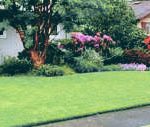
Northwest Iowa Sprinkler can install a fertilizer injector on your sprinkler system to fertilize as you water. Every time you use your irrigation system, the fertilizer injector releases small, precision doses of water soluble or liquid non-hazardous fertilizers into the water stream. One system will feed through both sprinkler and drip irrigation zones without the need to make any adjustments or nozzle changes to compensate for water flow or water pressure. This fertilizer injector will apply fertilizer in small amounts so that the fertilizer will not leach out or runoff. Call Northwest Iowa Sprinkler today to learn more about fertilizer injectors and to get an estimate. And see how much greener your lawn can be.
Firewood Sales
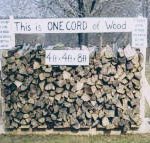
At Northwest Iowa Sprinkler we offer OAK firewood to keep you warm in the winter and for campfires in the summer. We sell firewood by the 1/4 cord (Half Pallet), 1/2 cord (1 Pallet), cord (2 Pallets) or by the bundle (5-6 large pieces). Great prices for Oak firewood. We will load pallets on your truck or trailer or deliver to you (for a small charge). Call Northwest Iowa Sprinkler today for all of your firewood needs.


